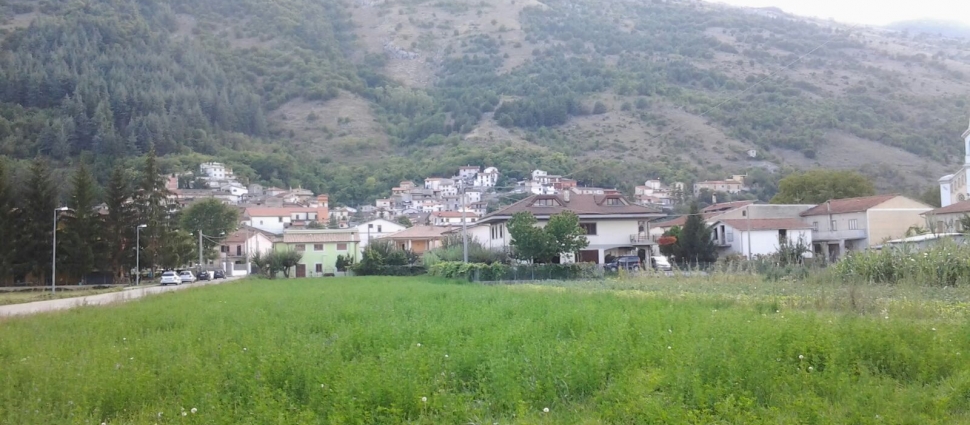The Italian Village That Called the Protestants for Help

The Italian Village That Called the Protestants for Help
Roman Catholic Bishop Pio Bagnoli couldn’t possibly have imagined the consequences of his decision when, in 1930, he removed a priest from his parish. Fr. Bernardino Mastroianni had been in Villa San Sebastiano, a small village by the Apennine Mountains, only a year. And yet, in that short time, he had won the hearts of most villagers by his acts of love and care.
Apart from a few professionals and a handful of wealthy families, the rest of the 1500 citizens of Villa San Sebastiano were extremely poor. Many of them were forced to work long hours and to live with their animals, with little to eat and hardly any clothes to wear. Resolute and energetic, Mastroianni worked hard to improve their lives – probably too hard and fast for the bishop, who accused him of acting without proper counsel.
Whatever the reason, the removal of Mastroianni from the village caused a strong reaction. Many wrote the bishop to ask him to reconsider. When all these attempts failed, a villager, Emilio Gargano, told the others about the love and care he had experienced at a Methodist church in America. Under his lead, 100 families wrote a letter to the British Methodist Church, inviting a preacher to come to their village.
Outdoor Preaching
Initially, the decision to invite the Methodists might have been, at least for some, a way to retaliate or threaten the bishop. But when an Italian Methodist, Emanuele Sbaffi, preached on a meadow near the village, 800 people (over half of the population) attended the service. Some later reported how impressed they were by his message. The whole service was a novelty, with the long reading of Scriptures, the clear exposition, and the singing of hymns - all in Italian (the Roman Catholic Mass was still in Latin). “It looked as though the whole town was about to be converted,”[1] someone commented.
When the bishop sent a priest to take Mastroianni’s place, however, he persuaded some of the villagers to return to the Catholic church. In the end, the Protestant congregation could count on a committed core of about 250 people. It was led by Dante Seta, a former priest who had become Methodist and who had come with Sbaffi to take the gospel to the village.
For some, the decision to join the Methodist church came at a great cost, since the bishop had ordered Roman Catholic families not to hire Protestants to work in their fields. In fact, many of the families who returned to the Roman Catholic church did so in order to keep their jobs and survive.
In the meantime, the Methodist Church bought from Gargano’s brother-in-law (also a stanch Protestant) a land near the original meadow and proceeded to build a church. It was not an easy task, since the bishop fought back with all his might, succeeding in delaying the government’s approval to the building. In a personal letter to the Italian dictator Benito Mussolini, Bagnoli denounced the Methodists as instigators and disturbers of the peace. He and the new parish priest didn’t refrain from pouring out slanders they later had to retract.
The Opposition
The sudden conversion of such a large portion of the village’s population and the determination to make the new Methodist church an established institution caused the Vatican to employ its highest prelates to devise a counterattack. If this had taken place in one village, what could prevent it from happening in other places? Eventually, the Vatican sent four Jesuits who began a fierce campaign of “reconquest” of as many people as possible, using any possible means (including forcing a woman to recant, bribing a family to rebaptize their children in the Catholic church, and convincing the Catholic wives of Protestant men to deny their husbands sex).
The friction between Catholics and Protestants continued to escalate. In 1932, when three Protestants sat in the town’s square with their back turned against a procession, some Roman Catholics assaulted them with clubs and stones. The men managed to escape but, in the evening, other Catholics attacked the homes of Protestant families. When the Protestants complained to the authorities, the bishop intervened and the attacking families were not charged. At that time, attacking the State religion was considered a crime, but attacking any other religion wasn’t.
In 1932, pastor Daniele Seta was accused of being anti-patriotic due to a reference, in a sermon, to Italy’s “incivility.” This charge came after repeated accusations of all kinds. In spite of his defense, where he stated his love for his country and his belief in the separation of church and state, he was forced to leave the village in 1934.
The church building finally opened in 1943 – oddly, through the intervention of the German forces that had occupied the building. But it took some time for the church to find a good pastor. It did in 1949 with Francesco Cacciapuoti, an energetic pastor and good organizer, who had a great impact on young people. Eventually, however, Cacciapuoti was also accused of being anti-patriotic and sent into confinement. (During the Fascist era, Protestants were often accused of being communists).
Today, the Methodist church is still standing in Villa San Sebastiano – still holding a small congregation and preserving the memory of an unusual event and a difficult time.
[1] Marco Piacente, “Villa San Sebastiano 1931,” https://www.marcopiacente.it/tesi.html, my translation





